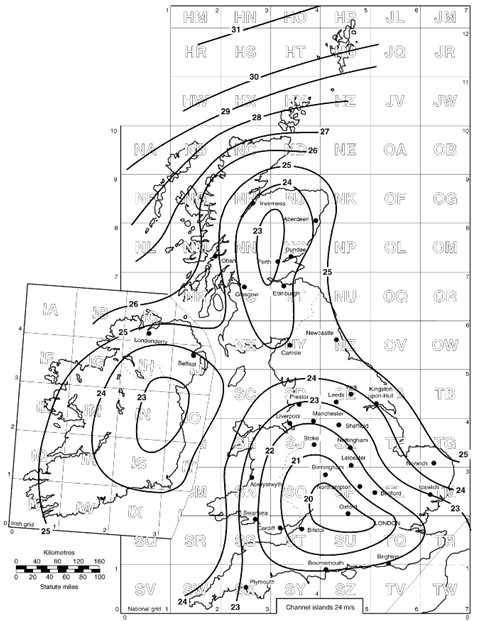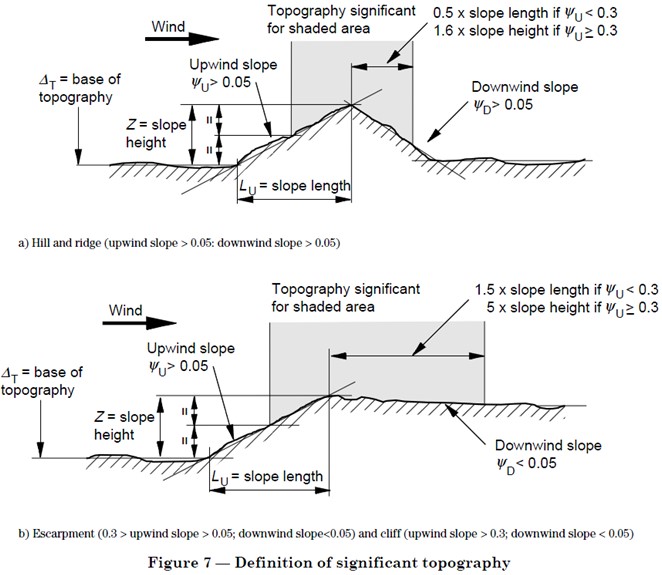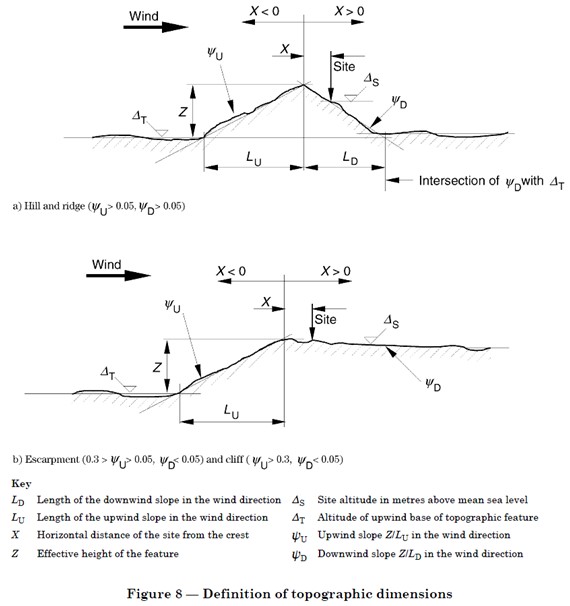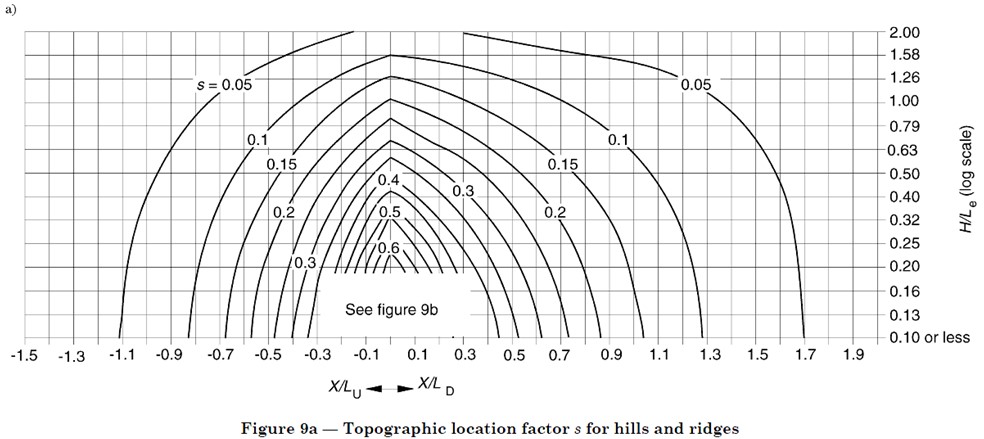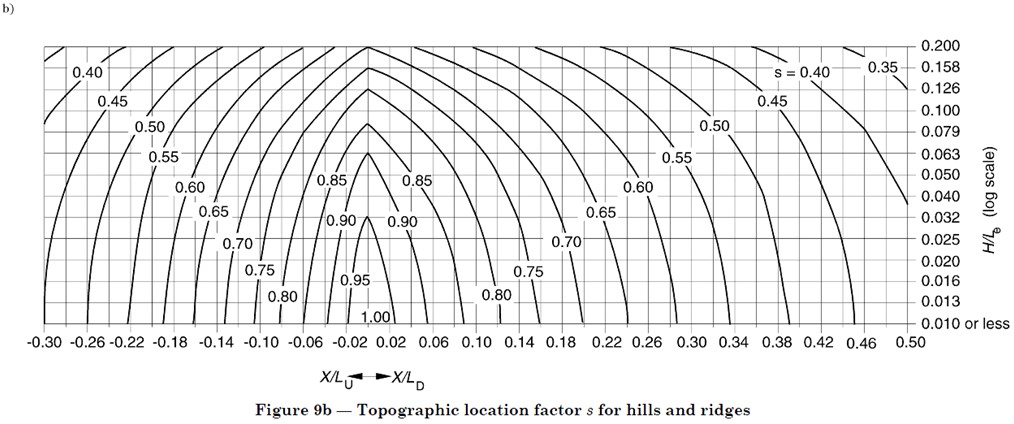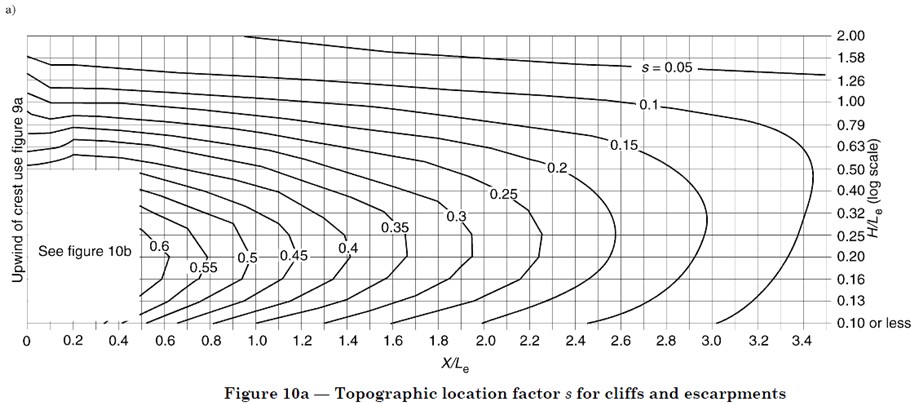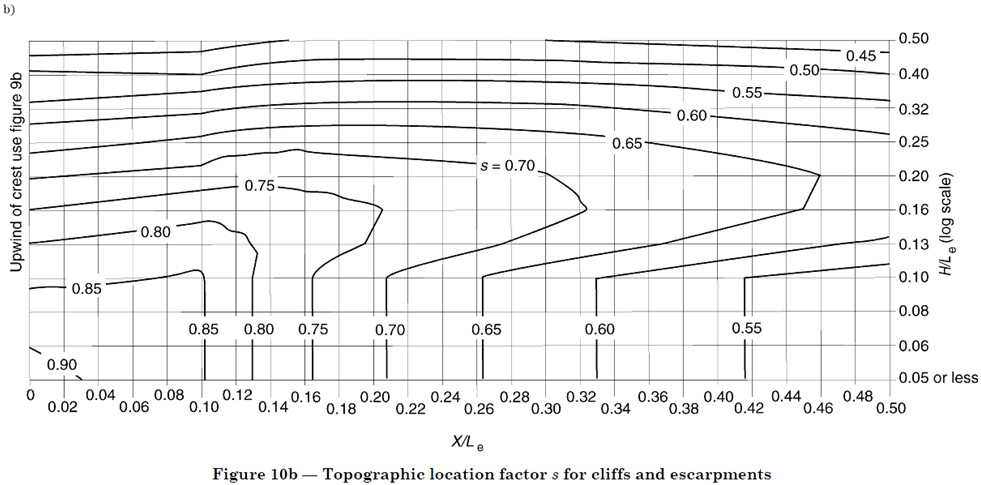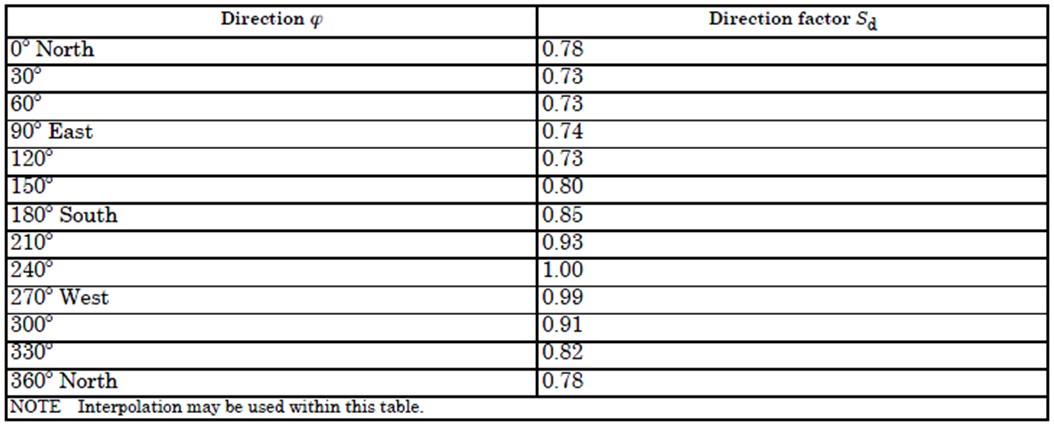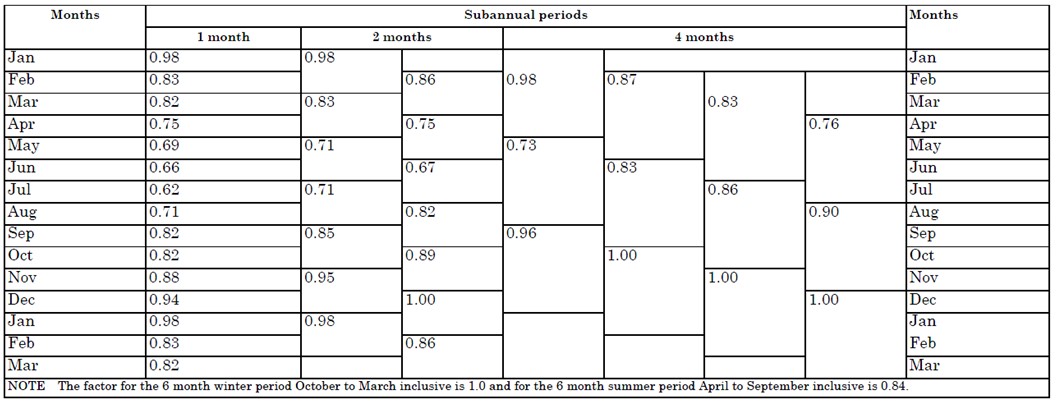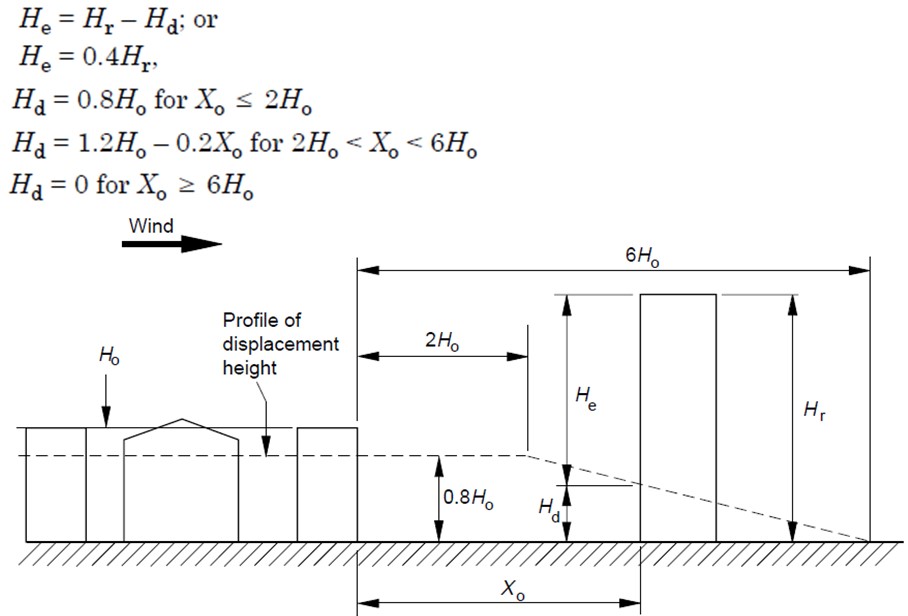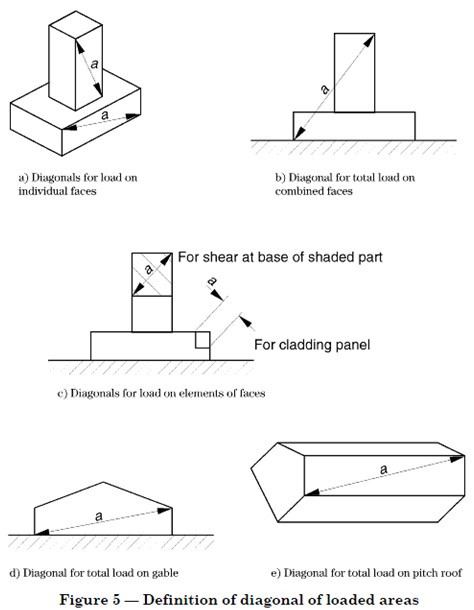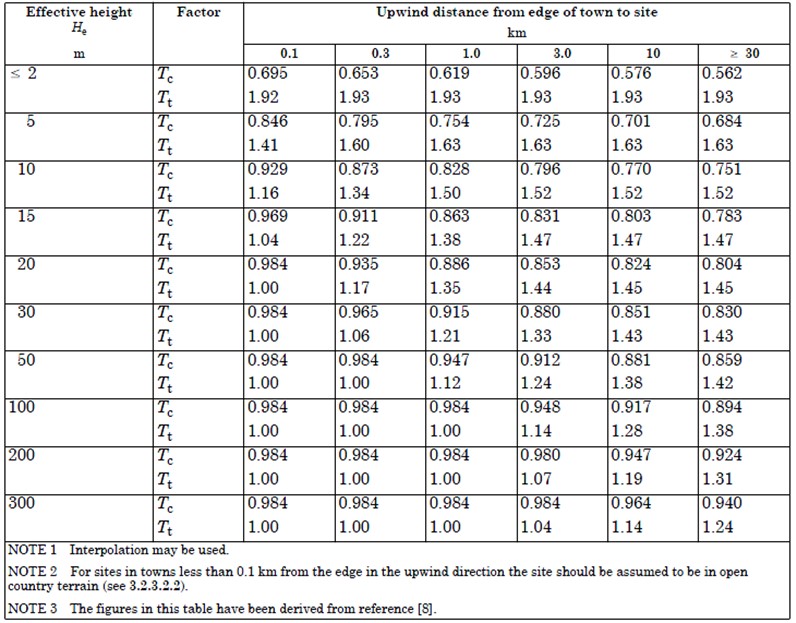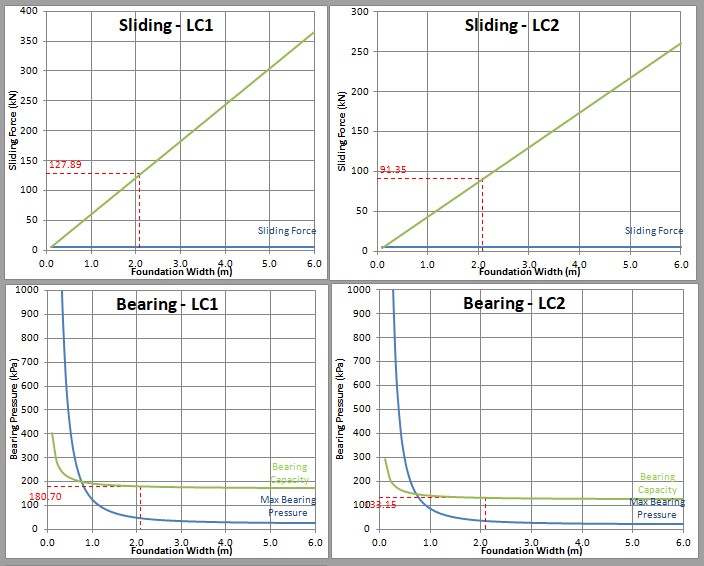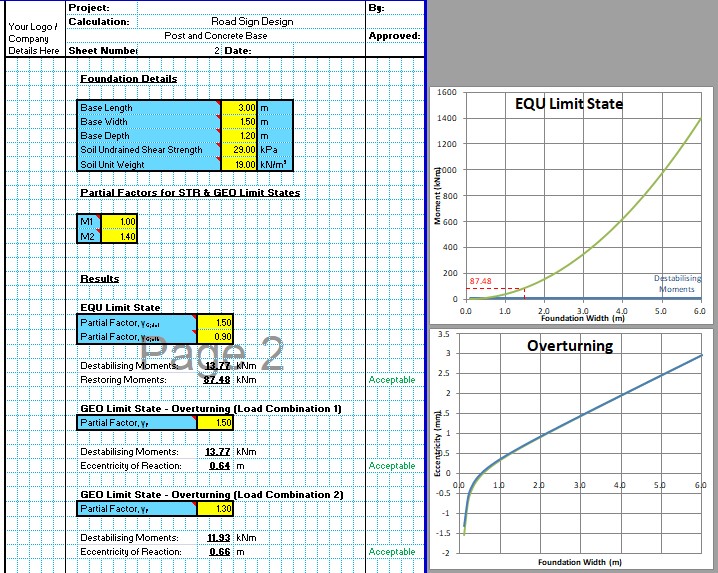High mast wind loading is the main source of loading acting on high mast light poles in service. The wind loading is calculated as per the below procedure, it is then converted to an effective wind pressure which creates a design bending moment acting on the high mast light pole. This design moment is then checked against the maximum allowable design moment for the high mast light pole section being considered.
According to the procedure contained in ILE Technical Report 7 high mast wind loading can be calculated using the BS 6399-2 method. This method has largely been superseded by the methods of BS EN 1991-1-4, but as the CivilWeb High Mast Light Pole Design Spreadsheet follows ILE Technical Report 7 for design, the BS 6399-2 method is used. It is largely equivalent to the more modern BS EN 1991-1-4 method but calculates an hourly average wind velocity rather than 10 minutes which ties better into the ILE Technical Report design methodology.
ILE Technical Report 7 calculates the peak response of the mast from the peak equivalent static pressure which is dependant on the wind speed of the site and the amplification of the wind pressure due to the oscillation of the mast.
High Mast Design Wind Speed
The design wind speed and the hourly mean wind speed are derived using the directional method in BS 6399-2. The equations used in this calculation are detailed below;
Site Wind Speed (Vs)
This is calculated using the below equation;
Basic Wind Speed (Vb)
For any location in the UK this can be taken from the below wind speed map taken from BS 6399-2.
High Mast Altitude Factor (Sa) – ILT Technical Report 7
ILE Technical Report 7 recommends that for high mast light pole design the Directional Wind Speed Method included in BS 6399-2 is used to calculate the Site Wind Speed. This method calculates the Altitude Factor slightly differently to the Standard Method. Both methods are presented below.
High Mast Altitude Factor (Sa) – Directional Wind Speed Method
The altitude factor is used to alter the basic wind speed to allow for the effects of altitude. Where topography is not considered significant, the following equation can be used;
Altitude Above Sea Level (s) (m)
This is the altitude of the site above sea level in metres. Where topography may be significant the following diagram can be used to determine whether it is significant or not.
When topography is considered significant, the following equation can be used to calculate the altitude factor;
Altitude of Topography Base (∆T) (m)
This is the altitude in meters of the base of the significant topography. This is defined in the above diagram.
Altitude Factor (Sa) – Standard Wind Speed Method
This method is slightly different from that recommended in ILE Technical Report 7, but is included below for completeness.
The altitude factor is used to alter the basic wind speed to allow for the effects of altitude. Where topography is not considered significant, the following equation can be used;
Altitude Above Sea Level (s) (m)
This is the altitude of the site above sea level in metres.
Where topography may be significant the above diagram can again be used to determine whether it is significant or not. When topography is considered significant, the following equation can be used to calculate the altitude factor;
Altitude of Upwind Base (∆T) (m)
This is the altitude in metres of the upwind base of the significant topography. This is defined in the diagram below.
Effective Slope (Ψe)
This is the effective slope of the topographic feature. This is also defined in the diagram below.
High Mast Topographic Location Factor (s)
This value can be estimated from the following graphs taken from BS 6399-2;
High Mast Direction Factor (Sd)
The Direction Factor is used to take account of the wind direction being considered because different wind speeds are typical of different wind directions. This value can be taken from the below table taken from BS 6399-2.
High mast light poles are usually subjected to winds in all directions, therefore a value of 1.0 is typically used. There may be some cases for example sports lighting where an array of luminaires are all pointed in the same direction. In this case the wind resistance area of the luminaires is different in different directions, so it may be advantageous to complete the calculations in more than one direction.
Seasonal Factor (Ss)
This adjusts the design wind speed to allow for any buildings or temporary structures which are exposed to the wind for short periods only. This value can be taken from the below table taken from BS 6399-2 where appropriate.
Probability Factor (Sp)
The Probability Factor is used to adjust the basic wind speed to accommodate return periods different from the standard 50 years. The following equation is used to calculate the Probability Factor;
High Mast Light Pole Return Period (Q) (Years)
The design Return Period describes the likelihood that the design wind speed will be exceeded. This is typically given in years which describes on average how often the design wind speed will be exceeded during the design life of the high mast light pole. For example a Return Period of 10 years means that on average, the design wind speed will be exceeded once every 10 years. This does not mean that this will definitely occur once every decade, but that there is a 10% chance of the design wind speed being exceeded every year. It could happen two years in a row and then not again for 20 years, for example.
For high mast light poles the ILE Technical Report 7 recommends a Return Period of 25 years which equates to a Probability Factor of 0.96. BS 6399-2 is based on a 50 year Return Period which is suited to buildings. This has a Probability Factor of 1.0.
In most cases high mast light poles are now designed with a return period of 50 years to comply with BS 6399-2. This only adds around 4% to the load compared with a 25 year return period.
In some cases it may be justifiable to choose a different Return Period. In these cases the below factors should be considered;
- The consequences of the design wind speed being exceeded, ie consequences of failure. This will depend on the type, usage and robustness of nearby structures and the distance to the high mast light pole.
- Any historical or irreplaceable structures or facilities must be considered.
- Alternative lighting which could be used to alleviate the consequences of failure.
- The construction, operation and maintenance costs or practical implications of a higher Return Period, balanced with the benefits.
- The aesthetic implications of a higher Return Period may be considered in some cases.
Most importantly the consequences of a failure must be investigated and the consequences mitigated wherever possible. This must avoid the possibility of a catastrophic failure of the system or dependent structures.
High Mast Effective Wind Speed (Ve)
The effective wind speed at the high mast location is given using the below equations;
Terrain & Building Factor (Sb)
The Terrain & Building Factor is used to take account of the Effective Height (He) of the high mast light pole and the local topography. It also modifies the hourly mean site wind speed to a suitable effective gust speed.
High Mast Light Pole Effective Height (He)
ILE Technical Report 7 recommends that the effective height of each section of the high mast light pole is taken as the height to the center of the section being considered. This can be conservative in some situations such as in built up areas with surrounding buildings.
In these cases the Effective Height can be modified to allow for the sheltering effects of nearby buildings or topography. The Reference Height (Hr) is the unmodified height. This is altered using the following equations;
Displacement Height (Hd)
This is the height of the building or topographical feature adjusted to account for the distance to the lighting mast.
Average Obstruction Height (H0)
This is the average height of the buildings or topographical features upwind of the lighting mast, as defined in the above diagram.
Distance (X0)
This is the distance upwind between the high mast light pole and the building or topographical feature considered, as defined in the above diagram.
Terrain & Building Factor (Sb) (Country)
In country terrain the following equation can be used;
Fetch Factor (Sc) & Turbulence Factor (St)
These two factors take into account the effects of the effective height being considered and the upwind distance to the sea. These can be taken from the below table taken from BS6399-2.
Gust Peak Factor (gt)
The Gust Peak Factor allows for the influence of the dimensions of the mast on the maximum gust speed. For high mast light poles ILE Technical Report 7 recommends a value of 3.44 as the pole is too narrow to significantly share any of the load.
For buildings this is determined using the following table and diagram taken from BS 6399-2.
Topographic Increment (Sh)
This allows for the local topography to be taken into account. This should be done in each wind direction considered.
This factor can be taken as 0 if there are no slopes steeper than 5% within a 1km radius or if the topography is not defined as significant as defined in the previously shown diagram.
Where significant topography is present the Topographical Increment can be set at a value between 0 and 0.6. The appropriate value can be obtained from the below table taken from BS 6399-2.
In some cases a steeply sloped valley wind speeds may be reduced below that expected for level terrain. Where there is any doubt a reduction should not be applied without expert advice.
Similarly in complex topography either a conservative value of 0.6 should be applied or expert advice should be sought. In this case a Topographical Increment could be obtained from scale models or from numerical simulations.
Terrain & Building Factor (Sb) (Town)
In urban terrain the following equation can be used;
Fetch Adjustment Factor (Tc) & Turbulence Adjustment Factor (Tt)
These factors are used to adjust the Fetch and Turbulence Factors to allow for the presence of urban terrain in the vicinity of the site. These can be obtained from the below table taken from BS 6399-2.
Conclusion
The CivilWeb High Mast Light Pole Design Spreadsheet completes all the above calculations in accordance with BS 6399-2 and ILE Technical Report 7 to calculate the wind loads acting on high mast lighting poles. These are then converted to a design bending moment and checked against the proposed high mast light pole bending capacity. The design bending moment is also used as the overturning moment and used to design the high mast light pole foundations using our unique design tool.
Get your copy of the CivilWeb High Mast Light Pole Design Spreadsheet including full wind loading calculations now for only £20.
Or why not bundle the CivilWeb High Mast Light Pole Design Spreadsheet with our Street Light Foundation Design Spreadsheet for only £5 extra?
Download Free Trial Version
To try out a fully functional free trail version of this software, please Click Here or enter your email address below to sign up to our newsletter.

